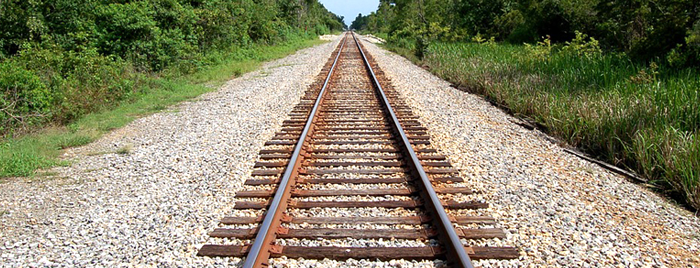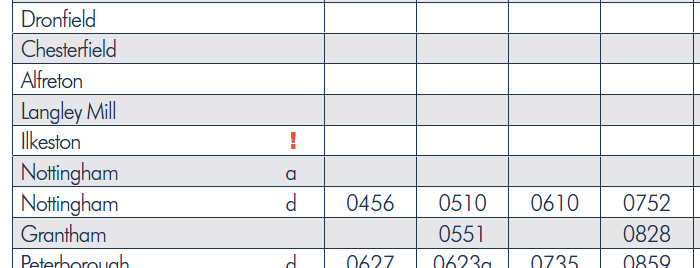Ilkeston was one of the largest towns in England without direct access to a railway link. Most residents were forced to travel into Derby or Nottingham to use their stations, when they could easily use a local station on the Erewash line in the first good half of the twentieth century.
Ilkeston Junction station, the last of three stations in the town, closed down 45 years ago, and ever since Ilkeston’s economy has suffered a steady decline. Coincidence or correlation? It’s hard to say.
The general consensus is that the newly-built 2017 station has literally and figuratively put Ilkeston on the map. It has taken some pressure off bus services and help alleviate rush hour congestion. It takes about 15 minutes to get from Ilkeston to Nottingham on the train.
Jobs and growth in the local economy may benefit as it could attract trade into the town, and also the simple reason that money would be spent on rail tickets within Ilkeston, instead of Derby, Nottingham or even Langley Mill.
Impact of new housing and pressure on transport links
Although Erewash Borough Council’s plans to build over 1000 new houses is on hiatus, the future implications of more homes raises the obvious increase on traffic on the roads. Nottingham Road becomes increasingly busy from around 3:00pm daily, and 500 houses at Quarry Hill and 700 on Manor Floods is not going to help the situation.
We believe that should any such residential developments be pushed though in the next few years, the transport infrastructure should exist first. Derbyshire Council’s Local Transport plan will consider the possibility of halting certain projects and raising funds to underwrite the total cost for the station.
How the new station could relieve congestion
“Following consultation, the preferred strategy is to put emphasis on supporting a resilient local economy, contributing to better safety, security and health, and improving quality of life and promoting a healthy natural environment. The preferred strategy would also aim to achieve longer term benefits for climate change, and measures to help people under the equality of opportunity goal.”
Each person who drives at the moment who switches to rail would take a car off the roads and ease up congestion on the A609 into Nottingham.
Trade, business and job creation
A past study highlighted Cotmanhay as one of the most economically deprived areas in the country, and a 2010 report concluded Erewash Borough as having the highest rate of unemployment.
Car ownership is low, and bus services limited so a rail link will help residents travel outside of Ilkeston to work, as well as bringing in potential shoppers for the suffering high street and local market.
Part of the Greater Nottingham Core Strategy intends to see Erewash Borough in a “climate for investment” via the Regional Economic Strategy. This sets out the provision of sites and infrastructure for economic growth.
The local business community will support the opening of a train station and must be encouraged to help spread the word via local media, such as the Ilkeston Advertiser, but also through their own premises or communications. The internet and social networking is of the upmost importance. The railway station proposal is also supported by the Erewash Partnership.
Economic Characteristics of Erewash
The employment profile of Erewash’s residents’ shows that the proportion employed in construction and manufacturing sectors is significantly higher than both regional and national rates, with a much lower proportion in managerial and professional occupations.
This reflects the educational picture in Erewash, which despite showing signs of strengthening over the last decade, still shows Erewash’s residents to be behind all other Greater Nottingham areas except Nottingham City.
The profile of jobs within the Borough itself shows there to be a strong manufacturing and construction basis, with jobs involving elementary occupations and more manual activities accounting for 25% of all jobs in Erewash in 2007, significantly above the Regional and National averages.
The rest of jobs are made up of a variety of other employment types.Established industries mostly surround the clusters of industrial areas around the Borough, mostly located in the south of Long Eaton at Fields Farm Road and at prominent industrial areas at Quarry Hill and Manners Industrial Estates.
Erewash has a limited level of “knowledge-based” jobs (such as computing) which are often seen as a key measure of economic competitiveness.
About 12% of jobs in Erewash are knowledge based, compared to 16% nationally. It is Nottingham City where the bulk of knowledge based jobs are concentrated locally. Reflective of the make-up of jobs, a high proportion of Erewash’s employment space is industrial space and a low proportion is offices.
Erewash acts, to an extent, as a residential area serving the Greater Nottingham and Derby employment areas, with a lot more workers in the Borough than there are jobs. Despite some evidence of modest job growth in Erewash in recent years, it is still a net exporter of jobs.
In 2007, there were 60,600 working residents but only 38,500 jobs. A certain level of imbalance is not surprising given the proximity of both Ilkeston and more so Long Eaton to Nottingham City, where around a third of Erewash’s residents work. A notable number of workers also work in and around the city of Derby.
Source: Erewash and Greater Nottingham, Core Strategy (page 31)
Key contacts
Ian Stephenson
Derbyshire County Council Chief Executive
Local Government Links
- Greater Nottingham Joint Planning Advisory Board meeting March 2012
- Derbyshire County Council Cabinet Meeting 20 September 2011 – Ilkeston Rail Station
- Erewash & Greater Nottingham Core Strategy
- Erewash Council Local Development Framework
- Erewash Borough Council – Ilkeston Railway Station
- Erewash rail Westminster debate 2010
- Derbyshire Local Transport Plan
- Derbyshire County Council FAQ: Where does the money come from?
Funding Information Links
- Network Rail: Station Commercial Project Facility Fund
- Greater Nottingham New Growth Point
- Regional Growth Fund
- UK Department for Business Innovation & Skills
- UK Department for Business Innovation & Skills: LEPs and infrastructure
Services and Timetable
I suppose we all want to know what services will be runnign exactly? Because of the delays, it’s hard to know for sure.
However, East Midlands Trains has a timetable section on their site that allows you to create a route plan based on our departure and arrival station.
Someone on Twitter generated a timetable showing that Ilkeston has been provisionally marked on the timetable in between Langley Mill and Nottingham.
If you download the PDF timetable by clicking here you can see for yourself. Northern Rail operate a route to Nottingham via Sheffield, Dronfield, Chesterfield, Alfreton and Langley Mill.

